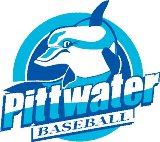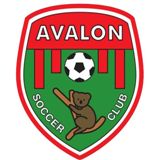The Comedy Wildlife Photography Awards are delighted to announce that the Nikon Comedy Wildlife Overall Winner of 2025 is: Mark Meth-Cohn with his fantastic image of a dancing gorilla skipping through a forest clearing.
He wins an incredible once in a lifetime safari, with the fabulous folk at Alex Walker’s Serian plus a unique handmade trophy from the Wonder Workshop in Tanzania.
CONGRATULATIONS Mark!!
And this means the STERNA People’s Choice Award is now open for your vote!! This means you can pick your absolute favourite finalist from 2025, plus if you vote, you might be picked at random to receive our cash prize of £500, WOW WOW WOW!! Courtesy of STERNA who are sponsoring this category!
You will automatically be entered into the prize draw from which a winner will be selected and announced on March 14th 2026.
To all of you who are asking, The Comedy Wildlife Photography Awards will be open for entries 14 March 2026.
You can find out more about our competition, our mission and our conservation efforts on our website.
2025 Winners
Overall Winner: Mark Meth Cohn (UK) with his picture “High Five”
“We spent four unforgettable days trekking through the misty Virunga Mountains in search of the gorilla families that call them home. On this particular day, we came across a large family group known as the Amahoro family, they were gathered in a forest clearing where the adults were calmly foraging while the youngsters were enthusiastically playing. One young male was especially keen to show off his acrobatic flair: pirouetting, tumbling, and high kicking. Watching his performance was pure joy, and I’m thrilled to have captured his playful spirit in this image. Doing well in any competition shows that the images you are producing are working. The Nikon Comedy Wildlife Awards are one of the major competitions of the year, easy to enter and fun but with a seriously committed underlying ethos and, after reaching the finals last year, I'm absolutely delighted to have gone one step further and win the competition this year”
Category
ThinkTANK Birds Award: Warren Price (UK) with their picture “Headlock”
“These guillemots were nesting on a small rocky cliff ledge where space was at a premium. The nests all crammed in close together which isn’t a good recipe for being good neighbours, as guillemots are fiercely territorial. Aggression and battles are frequent over nesting space and I captured this image of this bemused looking bridled guillemot, its head firmly clamped in his/her neighbours beak. I liked the way the guillemot was looking directly into my lens, its white eye-liner eyes highlighting its predicament! Sometimes you just want to bite your neighbours head off.. literally!”

“Headlock” (Supplied: Nikon Comedy Wildlife Awards/Warren Price)
Fish and Other Aquatic Species Award: Jenny Stock (UK) with her picture “Smiley”
“Whilst on a scuba dive in the Philippines, this little fish kept popping its head out of its home, a hole in the patterned coral. I took a few photos and I loved its cheeky face smiling back at me. What an expressive looking face! This cheerful looking species, the bluestriped fangblenny is around eight centimetres and actually has a rare defence mechanism, where it can bite an attacking predator and inject venom when it is threatened. The venom causes dizziness and disorientation, weakening the predator's ability to pursue and eat the fangblenny. I took the image at 10 meters deep, in the Philippines. I used an underwater housing around my mirrorless camera, and two underwater flash guns to illuminate the subject.”

''Smiley''.(Supplied: Nikon Comedy Wildlife Awards/Jenny Stock)
Reptiles, Amphibian and Insect Award: Grayson Bell (USA) with their picture “Baptism of the Unwilling Convert”
“This photo was taken in early spring of 2023. The male frogs all come out to start establishing territory in the pond. I took my camera and lay on my belly, watching them and taking shots. It wasn’t until I got back to the house and looked at the pictures that I saw this one and realized how much I liked it. I showed it to my parents and they loved it too and it became one of my favourites. We all thought it looked like one frog was trying to baptize the other! I started getting interested in photography about 3 years ago at the age of 10. My favourite subjects are chipmunks because they are so curious and cute. Winning these category awards has been awesome. It's great to be considered along side so many amazing entries and photographers. As a young photographer, it is affirming and inspiring to continue shooting! I really appreciated the opportunity to be a part of this!”
Nikon Junior Category (Under 16) Award: Grayson Bell (USA) with their picture “Baptism of the Unwilling Convert”

''Baptism Of The Unwilling Convert''.(Supplied: Nikon Comedy Wildlife Awards/Grayson Bell)
Nikon Young Photographer Category (Under 25): Paula Rustemeier (Germany) with their picture “Hit the dance floor - foxes in a breakdance battle”
“This shot was taken quite at the beginning of my wildlife photography "journey". I always enjoyed nature, but usually only photographed my dog, until I observed foxes for an essay I wrote for biology lessons in school and decided I want to try to photograph and learn even more about foxes. The photo was taken in a nature reserve. They don't get hunted there and therefore are seen during the day as well. Something I found true with all areas with low hunting pressure that I've been to so far.
I'm not the biggest fan of camouflaging. While I do use it occasionally, the best way I have found to photograph them, especially young ones, is just being present. If you put in the time, I found that the foxes usually get either curious or see you as something natural, not dangerous. Either way, they come close eventually. I had several foxes nipping at my shoes already like this, as well as foxes catching mice just a couple meters away from me!
This was my tactic with these foxes too. Like this, I could follow and document them for several months while they grew up. Their den lied in a sandy valley. Sometimes I found one or two sleeping in that area during the day, but when dawn set, they met up at this spot, got really active and often played a lot together, just like in the image.
The time with them taught me a lot about their social behaviour. I saw them fight, hunt, sleep, groom - and of course play, which is always my favourite to watch! You really have to giggle a lot watching foxes play with their quirky personalities.
Since then, I had been photographing and following fox cubs every spring/summer and had much more amazing encounters with foxes and also other wildlife. :)”

''Hit the dance floor!''(Supplied: Nikon Comedy Wildlife Awards/Paula Rustemeier)
Amazing Internet Portfolio Award: Maggie Hoffman (USA) with their picture “Digging for Gold”
“A young female chimpanzee picking her nose and eating it!”

''Digging for Gold'' (Supplied: Nikon Comedy Wildlife Awards/Maggie Hoffman)
Video Category Winner: Tatjana Epp (Germany) with their video “Surfing heron”
“At first we spotted the heron and didn't notice that it was actually standing on the back of the hippo. A perfect shelter for him, because there were so many crocodiles around. So actually a really smart move! When the hippo started moving , the heron looked a bit irritated. He almost lost his balance. But the way how fast he got his balance back and how he really seemed to enjoy the ride was a once in a lifetime scene to witness! The video ends with the hippo turning its head around. It wanted to get rid of the heron. But it stayed there and the hippo gave up in the end. When we left the place, the heron was still relaxing on the back. The video was filmed in the Kruger National Park in South Africa in March 2025.”
Highly Commended Winners
Alison Tuck (UK) with their picture “Now which direction is my nest”
“Taken on a Nikon School UK Photo Trip to Bempton Cliffs in Yorkshire, England in July 2023 using a Nikon Z6II with the 100-400mm f4.5-5.6 with 2x teleconverter at 460mm, 1/1000s, ISO 360 and f10.4. Bempton Cliffs are well known as a breeding site for Gannets, Razorbills and Puffins and the Nikon School visit was to photograph these birds. The cliffs are on the East coast of England and usually have an offshore wind, but unusually there was a strong onshore breeze making the gannets' take offs and landings more dynamic than usual as the wind hit the cliffs and was pushed straight up into the air. Whilst collecting nesting grass from one spot on the top of the cliffs the wind was blowing the grass across their eyes making take off and direction finding even more challenging, hence ’Now which direction is my nest?’ as the title I picked for my photograph.”

“Now which direction is my nest”(Supplied: Nikon Comedy Wildlife Awards/Alison Tuck)
Annette Kirby (Australia) with their picture “Go away”
“"In February 2025 I flew from my home in South Australia where the summer temperatures ranged from mid 20’s to mid-40 degrees Celsius to the island of Hokkadia in Japan, where temperatures were minus degrees, the coldest day being minus 18 Celsius.
I experienced a winter wonderland so vastly different from my arid hot home environment. A highlight was visiting Rausa on the Shirenhoka Peninsula and Nemuro Straits, where the Steller’s Sea Eagle gather in the winter to fish from drift ice. With fewer than 5000 left in the world they are listed as vulnerable on the International Union for Conservation of Nature’s Red List of threatened species. The female can weigh up to 9.5kg, making it the heaviest eagle in the world. Their wingspan, up to 2.5 metres is of the largest of any living eagle. In Japan they are protected and classified as a national treasure.
They indeed are a national treasure and so entertaining to watch and photograph as they fight to protect their catch. A favourite place for them to perch is on the sea wall protecting the fishing fleet at Rausa. They wait watching the boats come into the harbour hoping for a free feed of fish. I captured this photo of the Steller’s Sea Eagle as it sat in a deep hole in the snow. It had a fish and had flown on the sea wall and found a hole in the deep fresh snow. Other birds were flying above and as they came closer, I captured the look it gave them. There was no way it was parting with its catch. As it had made its intentions clear to other competitors, it stayed alert but managed to enjoy its catch.”

“Go away”(Supplied: Nikon Comedy Wildlife Awards/Annette Kirby)
Christy Grinton (Canada) with their picture “Bad hair day”
“For my image "Bad Hair Day" I was in a local park in downtown Victoria when I saw a grey blur run by. When I looked closer I saw a mother grey squirrel was relocating her babies to a new nest. The grass was dewy that morning so she was getting a wet tail as she ran through the grass. As she entered her new nest her tail was sticking out so when she turned around to leave, for a short second her head was covered by her wet tail. When I saw her it made me smile thinking I know that moment where you have just washed your hair and the doorbell goes! I also loved the textures and colours of the bark of the arbutus tree surrounding her and her "bad hair"”

“Bad hair day” (Supplied: Nikon Comedy Wildlife Awards/Christy Grinton)
Erkko Badermann (Finland) with their picture “Landing gear down”
“This photograph came about as a hard-won victory of patience. I have been photographing Red-throated Loons for several years. I lie on the edge of a bond under a camouflage net and photograph their spring courtship displays from my hide. The ground is wet and cold. That morning, an unseasonable early-spring snowfall caught me by surprise, making photography almost impossible. Lying there on the cold shore of the bond, I found myself thinking there was no sense in being there. I was already about to leave. However, I decided to stay, and the snowfall faded into quiet, beautiful drifting flakes, and a thin mist rose from the surface of the lake.
Another Red-throated Loon on the lake had turned white from the snowfall. From its behaviour I noticed that its mate was arriving at the lake, and I managed to get it in my camera’s focus against the grey sky. I lost it for a moment, but caught it again just before it landed on the water.
The Red-throated Loon is quite a “poor” flier, and its landing is usually very wobbly: it seeks balance with its legs stretched backwards and then belly-lands to glide. I like to say they use the water as their runway. This time the bird came straight towards me and was so steady you might imagine it had taken flying lessons.
The photograph has travelled with me in my exhibitions, and it always elicits a chuckle from viewers. There is something funny about it. I thought it would be perfect for this competition to bring joy to its viewers.”

“Landing gear down”(Supplied: Nikon Comedy Wildlife Awards/Erkko Badermann )
Kalin Botev (Bulgaria) with their picture “Monkey Circus”
“My wife, Nellie and I were on our honeymoon in the Hwange National Park in Zimbabwe, known for its vast landscapes and its huge elephant herds. We were there right in the beginning of the rainy season and witnessed how nature wakes up after the first rains in many months. Although animals had dispersed and were harder to see, we could feel the excitement brought by the rains everywhere. One evening on our way to the camp we bumped into a troop of baboons playing in a huge tree. One of the baboons was sitting on a big brunch and the others were running up and down the tree in circles. Every time they passed by the sitting baboon it was trying to catch them in a funny way. This play continued for more than 15 minutes and the baboons seemed to really enjoy it.”

“Monkey Circus” (Supplied: Nikon Comedy Wildlife Awards/Kalin Botev)
Liliana Luca (Italy) with their picture “Fonzies advertising”
“This moment happened after the tourists had left Nosy Komba (Madagascar). I stopped, letting the silence fall around me, and turned my attention to a group of crowned sifakas (Propithecus deckenii). It was then that he appeared, staring at me with wide, curious eyes, as if questioning my presence... or perhaps my clothing choices.
Then, with the grace of a stage actor and the timing of a comedian, he raised his hand, licked it thoughtfully, and then paused mid-gesture, as if he knew exactly what he was doing.
The photo immediately reminded me of that old snack commercial:
"If you don't lick your fingers... you're only half enjoying it!"
Ultimately, this is why I love nature photography so much: sometimes nature's sense of humour is better than our own; you just have to be ready to catch it..”

“Fonzies advertising”(Supplied: Nikon Comedy Wildlife Awards/Liliana Luca)
Mark Meth Cohn (UK) with their picture “Aaaaawa - mum”
“This photograph was taken during a trip to Rwanda earlier this year, where we spent four unforgettable days trekking through the misty Virunga Mountains in search of the gorilla families that call them home. On this particular day, we came across a large family group gathered in a forest clearing, the adults were calmly foraging while the youngsters were enthusiastically playing. Doing well in any competition shows that the images you are producing are working. The Nikon Comedy Wildlife Awards are one of the major competitions of the year, easy to enter and fun but with a seriously committed underlying ethos and, after reaching the finals last year, I'm absolutely delighted to have gone one step further and win this year.”

“Aaaaawa - mum”(Supplied: Nikon Comedy Wildlife Awards/Mark Meth Cohn)
Meline Ellwanger (USA) with their picture “The choir”
“A hilariously lucky moment I caught of these these three lions yawning at the same time.”

“The choir” (Supplied: Nikon Comedy Wildlife Awards/Meline Ellwanger)
Valtteri Mulkahainen (Finland) with their picture “Smile - you're being photographed ”
“When I was photographing bears, this one year old bear cub saw it and started smiling at me. Apparently he had already had to pose in front of photographers.”

“Smile - you're being photographed ” (Supplied: Nikon Comedy Wildlife Awards/ Valtteri Mulkahainen)
Australian Finalists

Beate Ammer, Queensland ''The Frog Prince of the Grape Vine'' - Supplied: Nikon Comedy Wildlife Awards/Beate Ammer - a Green Tree Frog
“Meet the frog prince of my little garden – he’s been lazing around guarding my grapevine, waiting for a kiss, but I think he is just here for the grapes. This charming amphibian seems to have mistaken the vine for his royal court, lounging among the plump fruit as if he’s the monarch of the orchard.”

Andrew Mortimer, Western Australia ''The Shoulders of Giants'' - Supplied: Nikon Comedy Wildlife Awards/Andrew Mortimer
"If I have seen further, it is by standing on the shoulders of giants"
''I'm sure Issac Newton didn't mean that literally, but for some of these desert tree frogs around Leonora have taken it to heart!''
About the Comedy Wildlife Photo Awards
While living in East Africa and working as a wildlife photographer, founder Paul Joynson-Hicks MBE was looking through his photographs when he came across several that made him laugh out loud: an eagle looking at me through its back legs and a warthog’s bottom. He realised that the humour of these photographs was both entertaining and a means to engage people with the threats facing these same animals.
A funny animal photo is incredibly effective because there are no barriers to understanding, or taboos that must be negotiated. It taps into the impulse for anthropomorphism (big word!) which is well-documented as one of the most powerful triggers for human empathy. To really understand animals and the issues that affect them, you need to empathise with them as fellow inhabitants of the same planet.
And so, in 2015, The Comedy Wildlife Photography Awards was born from Paul’s small office in Usa River on the slopes of Mt Meru in northern Tanzania. Soon after, Co-Founder and photographer Tom Sullam was bought on board and then Michelle Wood, a couple of years later.
Since then, steered by its founders, the competition has grown and grown into a global competition that’s able to make a meaningful contribution to the amazing world of wildlife.
The deluge of images of animals and habitats in peril can be hard to digest. The Comedy Wildlife Photography Awards’ content accesses our empathy by showing how alike we really are. You don’t need to cover your eyes or look away. We want our viewers to share our enjoyment of nature and take the time to recognise its value.
The Comedy Wildlife Photography Awards has become a fixture on photographer’s competition calendar. Every year, we accept thousands of images from around the world for each category and receive global media coverage.
Novice and expert photographers can enter up to 10 images: 4 portfolio entries and an additional 6 entries for the different categories every year. Entry is free.
This is our mission. Yup, it is certainly ballsy, a bit grandiose, but isn’t that what a mission should be? Aspirational, otherwise what’s the point. We want to educate and enlighten, and we want to do this by earning people’s attention by showing them things they don't expect.
Once we have opened their eyes, we can expand their understanding of the natural world and encourage them to share our enjoyment of nature and its value.
Fundraising is not our primary purpose but, each year, we will choose a small grass-roots conservation organisation to support - you can read more about our conservation mission here.
Every year our reach grows bigger and our conservation message gets a little louder. We are so proud to be a part of it and happy that we can put a smile on your face!
You can find out more about our competition, our mission and our conservation efforts on our website.


![]()
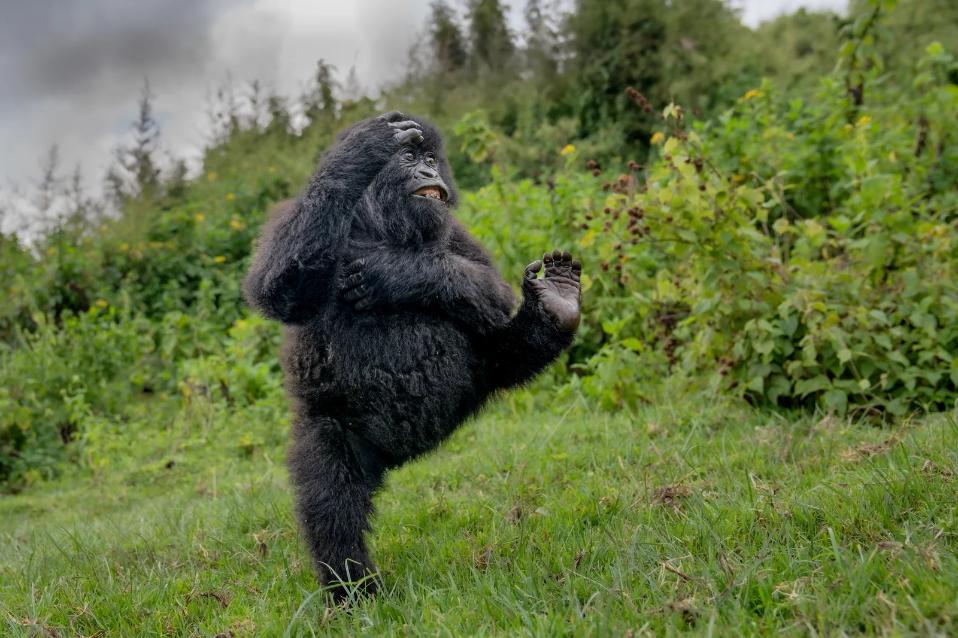































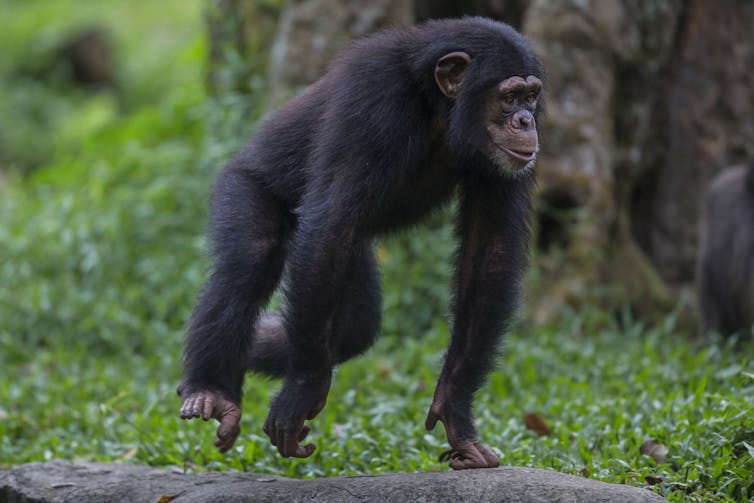

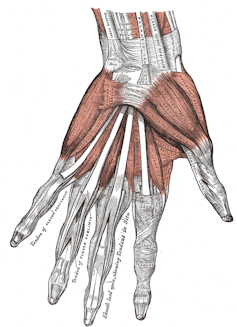
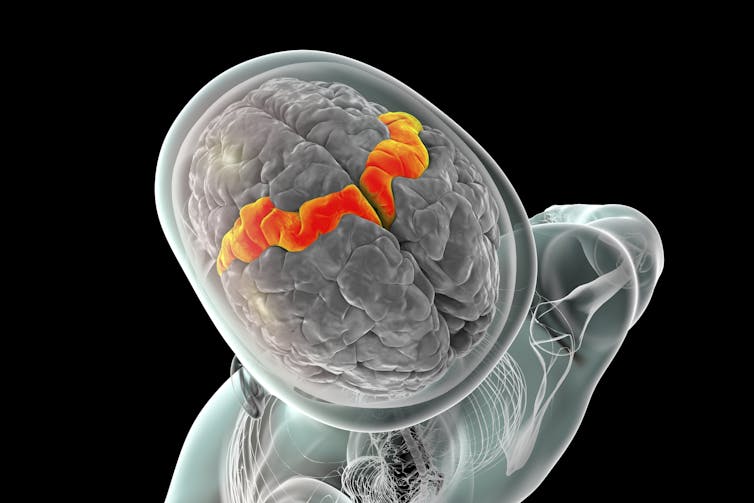


 Ingleside Riders Group Inc. (IRG) is a not for profit incorporated association and is run solely by volunteers. It was formed in 2003 and provides a facility known as “Ingleside Equestrian Park” which is approximately 9 acres of land between Wattle St and McLean St, Ingleside.
Ingleside Riders Group Inc. (IRG) is a not for profit incorporated association and is run solely by volunteers. It was formed in 2003 and provides a facility known as “Ingleside Equestrian Park” which is approximately 9 acres of land between Wattle St and McLean St, Ingleside. 